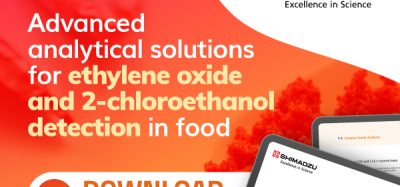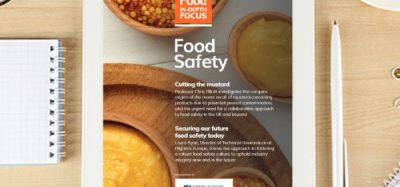Tool developed to rapidly detect blackleg disease in potatoes
- Like
- Digg
- Del
- Tumblr
- VKontakte
- Buffer
- Love This
- Odnoklassniki
- Meneame
- Blogger
- Amazon
- Yahoo Mail
- Gmail
- AOL
- Newsvine
- HackerNews
- Evernote
- MySpace
- Mail.ru
- Viadeo
- Line
- Comments
- Yummly
- SMS
- Viber
- Telegram
- Subscribe
- Skype
- Facebook Messenger
- Kakao
- LiveJournal
- Yammer
- Edgar
- Fintel
- Mix
- Instapaper
- Copy Link
Posted: 6 December 2019 | Sam Mehmet (New Food) | No comments yet
Scientists from the American Phytopathological Society have developed an online tool called Uniqprimer, which aims to quickly and automatically design species-specific DNA tags for detecting pathogens using DNA testing.


Potatoes are said to rank fourth among the world’s staple crops. In the US, they are grown commercially in 30 states and valued at $4 billion annually. Potatoes are however said to be susceptible to 160 different fungal, bacterial and viral diseases, such as blackleg and soft rot diseases, which are caused by the bacterium Dickeya dianthicola.
In 2015, an aggressive outbreak of this bacterium led to losses of greater than $40 million. In part, this outbreak allegedly occurred because of the inability to detect this specific bacterium when seed potatoes were being screened for pathogens using DNA-based tests.
To prevent an outbreak of this magnitude from occurring again, scientists from the American Phytopathological Society developed an online tool called Uniqprimer, which was designed to quickly and automatically design species-specific DNA tags (also known as primers) for detecting pathogens using DNA testing.
To test the Uniqprimer, the scientists screened 116 field samples for the presence of D. dianthicola and found it in samples from nine different states. The Uniqprimer was reportedly able to detect the bacterium when other more commonly used tests did not.
While Uniqprimer was developed with blackleg disease and potatoes in mind, it can allegedly be applied to any pathogen and in any geographic area.
“We hope Uniqprimer and the tests it designed will aid in the accurate detection of D. dianthicola and many other pathogens,” said lead author Shaista Karim. “Accurate pathogen detection is the first step for management of a disease, which helps in reducing the losses in the potato industry and informing the farmers in a timely manner to better aid on-farm decision making.”









